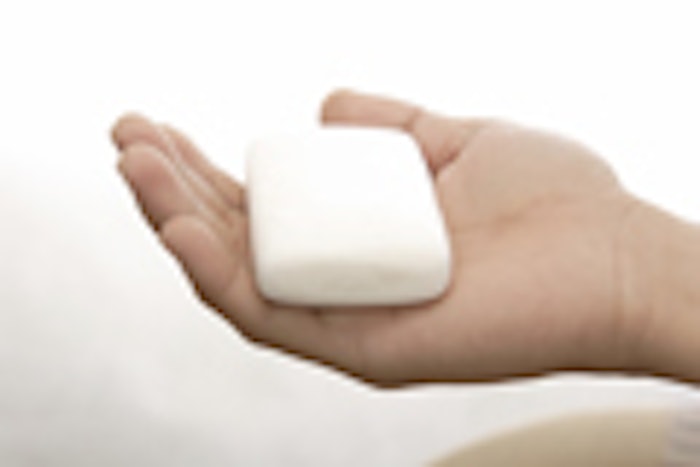
Updated October 21, 2009
Each week Centers for Disease Control (CDC) analyzes information about influenza disease activity in the United States and publishes findings of key flu indicators in a report called FluView.
During the week of Oct. 4–10, 2009, a review of the key indictors found that influenza activity continued to increase in the United States from the previous week. Below is a summary of the most recent key indicators:
- Visits to doctors for influenza-like illness (ILI) continued to increase in the United States, and overall, are higher than what is expected for this time of the year. ILI activity now is equal to or higher than what is seen at the peak of many regular flu seasons.
- Total influenza hospitalization rates for laboratory-confirmed flu are climbing and are higher than expected for this time of year.
- The proportion of deaths attributed to pneumonia and influenza (P&I) based on the 122 Cities Report has increased and exceeds what is normally expected at this time of year. In addition, 11 flu-related pediatric deaths were reported this week; 10 of these deaths were confirmed 2009 H1N1, and one was influenza A virus, but unsubtyped. Since April 2009, there have been 86 confirmed pediatric 2009 H1N1 deaths; 39 of these have been reported to CDC since Aug. 30, 2009.
- Forty-one states are reporting widespread influenza activity at this time. They are: Alabama, Alaska, Arizona, Arkansas, California, Colorado, Delaware, Florida, Georgia, Idaho, Illinois, Indiana, Iowa, Kansas, Kentucky, Louisiana, Maryland, Minnesota, Mississippi, Missouri, Montana, Nebraska, Nevada, New Hampshire, New Mexico, New York, North Carolina, North Dakota, Ohio, Oklahoma, Oregon, Pennsylvania, South Dakota, Texas, Tennessee, Utah, Virginia, Washington, West Virginia, Wisconsin, and Wyoming. This many reports of widespread activity are unprecedented during seasonal flu.
- Almost all of the influenza viruses identified so far are 2009 H1N1 influenza A viruses. These viruses remain similar to the virus chosen for the 2009 H1N1 vaccine, and remain susceptible to the antiviral drugs oseltamivir and zanamivir with rare exception.
How your spa should handle the situation
According to industry experts Rebecca James Gadberry, chairman and co-CEO of YG Laboratories, and Terri Wojak, director of True University, the following steps should be taken by your spa to help make it as safe and sanitary as possible for clients and employees alike.
- Hand sanitizer. Place hand sanitizer in key areas throughout the spa, especially in the reception area, bathrooms and locker rooms. Provide all employees with pocket-sized hand sanitizers and encourage them to carry the sanitizer when they're off-premises, too.
- Protective gear. Make sure all estheticians wear gloves and a medical-grade protective face mask throughout services. For the esthetician to see, the mask should lay flat over the mouth and nose rather than in a bubble shape. Do not touch anything else while wearing gloves, such as your face, nose and other surfaces. If it’s unavoidable, change gloves before continuing the service and properly disinfect any areas that were touched.
- Wipes. Wipe down frequently used doors, phones and communal key boards with sanitation wipes once an hour.
- Keep rooms clean. Thoroughly wash bowls, brushes and other implements with antibacterial soap and use a medical-grade disinfectant. Always change sheets, towels and bedding after each client.
- Keep products sanitary. Products need to be kept sanitized, as well. Dispense products into separate bowls before touching the client, or if you need to grab something else, again make sure you have on a fresh pair of gloves. Every product should also be wiped down with a disinfectant after every service.
- Cancellation policy. Suspend your cancellation policy until the pandemic has passed. Clients who feel ill may decide to come in rather than lose money because they cancelled an appointment.
- Do not treat ill clients. If a client shows signs of being ill, do not treat proceed with the treatment. It is better to be safe than sorry, and it is not fair to put providers, employees or other clients at risk for illness.
- Send employees home. Make your staff aware of the main symptoms of the H1N1 virus. These can be found further down in this article. If an employee feels ill at work or before she comes to work, allow her to stay home. This illness comes on suddenly, so make sure you have backup plans to replace employees who may call in sick or be sent home during their shift.
- Visit the Centers for Disease Control (CDC) Web site. Not only can you keep up with the latest news about the virus, you can also download a variety of posters to help build awareness about how to protect against passing along the disease and being exposed to it.
The H1N1 flu and you
The following information was provided by the CDC Web site.
What is 2009 H1N1 (swine flu)?
2009 H1N1 (sometimes called “swine flu”) is a new influenza virus causing illness in people. This new virus was first detected in people in the United States in April 2009. This virus is spreading from person-to-person worldwide, probably in much the same way that regular seasonal influenza viruses spread. On June 11, 2009, the World Health Organization (WHO) signaled that a pandemic of 2009 H1N1 flu was underway.
Why is 2009 H1N1 virus sometimes called “swine flu”?
This virus was originally referred to as “swine flu” because laboratory testing showed that many of the genes in this new virus were very similar to influenza viruses that normally occur in pigs (swine) in North America. But further study has shown that this new virus is very different from what normally circulates in North American pigs. It has two genes from flu viruses that normally circulate in pigs in Europe and Asia and bird (avian) genes and human genes. Scientists call this a "quadruple reassortant" virus.
Is 2009 H1N1 virus contagious?
The 2009 H1N1 virus is contagious and is spreading from human to human.
How does 2009 H1N1 virus spread?
Spread of 2009 H1N1 virus is thought to occur in the same way that seasonal flu spreads. Flu viruses are spread mainly from person to person through coughing or sneezing by people with influenza. Sometimes people may become infected by touching something—such as a surface or object—with flu viruses on it and then touching their mouth or nose.
What are the signs and symptoms of this virus in people?
The symptoms of 2009 H1N1 flu virus in people include fever, cough, sore throat, runny or stuffy nose, body aches, headache, chills and fatigue. Some people may have vomiting and diarrhea. People may be infected with the flu, including 2009 H1N1 and have respiratory symptoms without a fever. Severe illnesses and deaths have occurred as a result of illness associated with this virus.
How severe is illness associated with 2009 H1N1 flu virus?
Illness with 2009 H1N1 virus has ranged from mild to severe. While most people who have been sick have recovered without needing medical treatment, hospitalizations and deaths from infection with this virus have occurred.
In seasonal flu, certain people are at “high risk” of serious complications. This includes people 65 years and older, children younger than five years old, pregnant women, and people of any age with certain chronic medical conditions. About 70% of people who have been hospitalized with this 2009 H1N1 virus have had one or more medical conditions previously recognized as placing people at “high risk” of serious seasonal flu-related complications. This includes pregnancy, diabetes, heart disease, asthma and kidney disease.
Young children are also at high risk of serious complications from 2009 H1N1, just as they are from seasonal flu. And while people 65 and older are the least likely to be infected with 2009 H1N1 flu, if they get sick, they are also at “high risk” of developing serious complications from their illness. See People at High Risk of Developing Flu-Related Complications for more information about who is more likely to get flu complications that result in being hospitalized and occasionally result in death.
CDC laboratory studies have shown that no children and very few adults younger than 60 years old have existing antibody to 2009 H1N1 flu virus; however, about one-third of adults older than 60 may have antibodies against this virus. It is unknown how much, if any, protection may be afforded against 2009 H1N1 flu by any existing antibody.
How long can an infected person spread this virus to others?
People infected with seasonal and 2009 H1N1 flu shed virus and may be able to infect others from 1 day before getting sick to 5 to 7 days after. This can be longer in some people, especially children and people with weakened immune systems and in people infected with the new H1N1 virus.
What can I do to protect myself from getting sick?
This season, there is a seasonal flu vaccine to protect against seasonal flu viruses and a 2009 H1N1 vaccine to protect against the 2009 H1N1 influenza virus (sometimes called “swine flu”). A flu vaccine is the first and most important step in protecting against flu infection. For information about the 2009 H1N1 vaccines, visit H1N1 Flu Vaccination Resources
There are also everyday actions that can help prevent the spread of germs that cause respiratory illnesses like the flu.
Take these everyday steps to protect your health:
- Cover your nose and mouth with a tissue when you cough or sneeze. Throw the tissue in the trash after you use it.
- Wash your hands often with soap and water. If soap and water are not available, use an alcohol-based hand rub.*
- Avoid touching your eyes, nose or mouth. Germs spread this way.
- Try to avoid close contact with sick people.
- If you are sick with flu-like illness, CDC recommends that you stay home for at least 24 hours after your fever is gone except to get medical care or for other necessities. (Your fever should be gone without the use of a fever-reducing medicine.) Keep away from others as much as possible to keep from making others sick.
Other important actions that you can take are:
- Follow public health advice regarding school closures, avoiding crowds and other social distancing measures.
- Be prepared in case you get sick and need to stay home for a week or so; a supply of over-the-counter medicines, alcohol-based hand rubs* (for when soap and water are not available), tissues and other related items could help you to avoid the need to make trips out in public while you are sick and contagious.
What is the best way to keep from spreading the virus through coughing or sneezing?
If you are sick with flu-like illness, CDC recommends that you stay home for at least 24 hours after your fever is gone except to get medical care or for other necessities. (Your fever should be gone without the use of a fever-reducing medicine.)
Keep away from others as much as possible. Cover your mouth and nose with a tissue when coughing or sneezing. Put your used tissue in the waste basket. Then, clean your hands, and do so every time you cough or sneeze.
If I have a family member at home who is sick with 2009 H1N1 flu, should I go to work?
Employees who are well but who have an ill family member at home with 2009 H1N1 flu can go to work as usual. These employees should monitor their health every day, and take everyday precautions including covering their coughs and sneezes and washing their hands often with soap and water, especially after they cough or sneeze. If soap and water are not available, they should use an alcohol-based hand rub.* If they become ill, they should notify their supervisor and stay home. Employees who have an underlying medical condition or who are pregnant should call their health care provider for advice, because they might need to receive influenza antiviral drugs.
What is the best technique for washing my hands to avoid getting the flu?
Washing your hands often will help protect you from germs. CDC recommends that when you wash your hands -- with soap and warm water -- that you wash for 15 to 20 seconds. When soap and water are not available, alcohol-based disposable hand wipes or gel sanitizers may be used.* You can find them in most supermarkets and drugstores. If using gel, rub your hands until the gel is dry. The gel doesn't need water to work; the alcohol in it kills the germs on your hands.
What should I do if I get sick?
For information about what to do if you get sick with flu-like symptoms this season, a downloadable flyer containing this information is available.
What are “emergency warning signs” that should signal anyone to seek medical care urgently?
In children:
- Fast breathing or trouble breathing
- Bluish skin color
- Not drinking enough fluids
- Not waking up or not interacting
- Being so irritable that the child does not want to be held
- Flu-like symptoms improve but then return with fever and worse cough
- Fever with a rash
In adults:
- Difficulty breathing or shortness of breath
- Pain or pressure in the chest or abdomen
- Sudden dizziness
- Confusion
- Severe or persistent vomiting
Are there medicines to treat 2009 H1N1 infection?
Yes. There are drugs your doctor may prescribe for treating both seasonal and 2009 H1N1 called “antiviral drugs.” These drugs can make you better faster and may also prevent serious complications. This flu season, antiviral drugs are being used mainly to treat people who are very sick, such as people who need to be hospitalized, and to treat sick people who are more likely to get serious flu complications. Your health care provider will decide whether antiviral drugs are needed to treat your illness. Remember, most people with 2009 H1N1 have had mild illness and have not needed medical care or antiviral drugs and the same is true of seasonal flu.
What is CDC’s recommendation regarding "swine flu parties"?
"Swine flu parties" are gatherings during which people have close contact with a person who has 2009 H1N1 flu in order to become infected with the virus. The intent of these parties is for a person to become infected with what for many people has been a mild disease, in the hope of having natural immunity 2009 H1N1 flu virus that might circulate later and cause more severe disease.
CDC does not recommend "swine flu parties" as a way to protect against 2009 H1N1 flu in the future. While the disease seen in the current 2009 H1N1 flu outbreak has been mild for many people, it has been severe and even fatal for others. There is no way to predict with certainty what the outcome will be for an individual or, equally important, for others to whom the intentionally infected person may spread the virus.
CDC recommends that people with 2009 H1N1 flu avoid contact with others as much as possible. If you are sick with flu-like illness, CDC recommends that you stay home for at least 24 hours after your fever is gone except to get medical care or for other necessities. (Your fever should be gone without the use of a fever-reducing medicine.) Stay away from others as much as possible to keep from making others sick.
How long can influenza virus remain viable on objects (such as books and doorknobs)?
Studies have shown that influenza virus can survive on environmental surfaces and can infect a person for 2 to 8 hours after being deposited on the surface.
What kills influenza virus?
Influenza virus is destroyed by heat (167-212°F [75-100°C]). In addition, several chemical germicides, including chlorine, hydrogen peroxide, detergents (soap), iodophors (iodine-based antiseptics), and alcohols are effective against human influenza viruses if used in proper concentration for a sufficient length of time.
What surfaces are most likely to be sources of contamination?
Germs can be spread when a person touches something that is contaminated with germs and then touches his or her eyes, nose, or mouth. Droplets from a cough or sneeze of an infected person move through the air. Germs can be spread when a person touches respiratory droplets from another person on a surface like a desk, for example, and then touches their own eyes, mouth or nose before washing their hands.
How should waste disposal be handled to prevent the spread of influenza virus?
To prevent the spread of influenza virus, it is recommended that tissues and other disposable items used by an infected person be thrown in the trash. Additionally, persons should wash their hands with soap and water after touching used tissues and similar waste.
Can 2009 H1N1 flu virus be spread through water in swimming pools, spas, water parks, interactive fountains, and other treated recreational water venues?
Influenza viruses infect the human upper respiratory tract. There has never been a documented case of influenza virus infection associated with water exposure. Recreational water that has been treated at CDC recommended disinfectant levels does not likely pose a risk for transmission of influenza viruses. No research has been completed on the susceptibility of 2009 H1N1 influenza virus to chlorine and other disinfectants used in swimming pools, spas, water parks, interactive fountains, and other treated recreational venues. However, recent studies have demonstrated that free chlorine levels recommended by CDC (1–3 parts per million [ppm or mg/L] for pools and 2–5 ppm for spas) are adequate to disinfect avian influenza A (H5N1) virus. It is likely that other influenza viruses such as 2009 H1N1 virus would also be similarly disinfected by chlorine.
Note: Much of the information in this document is based on studies and past experience with seasonal (human) influenza. CDC believes the information applies to 2009 H1N1 (swine) viruses as well, but studies on this virus are ongoing to learn more about its characteristics. This document will be updated as new information becomes available.
*What if soap and water are not available and alcohol-based products are not allowed in my facility? Updated on September 14: If soap and water are not available and alcohol-based products are not allowed, other hand sanitizers that do not contain alcohol may be useful.
From the Centers for Disease Control (www.cdc.gov). Accessed Oct. 21, 2009










